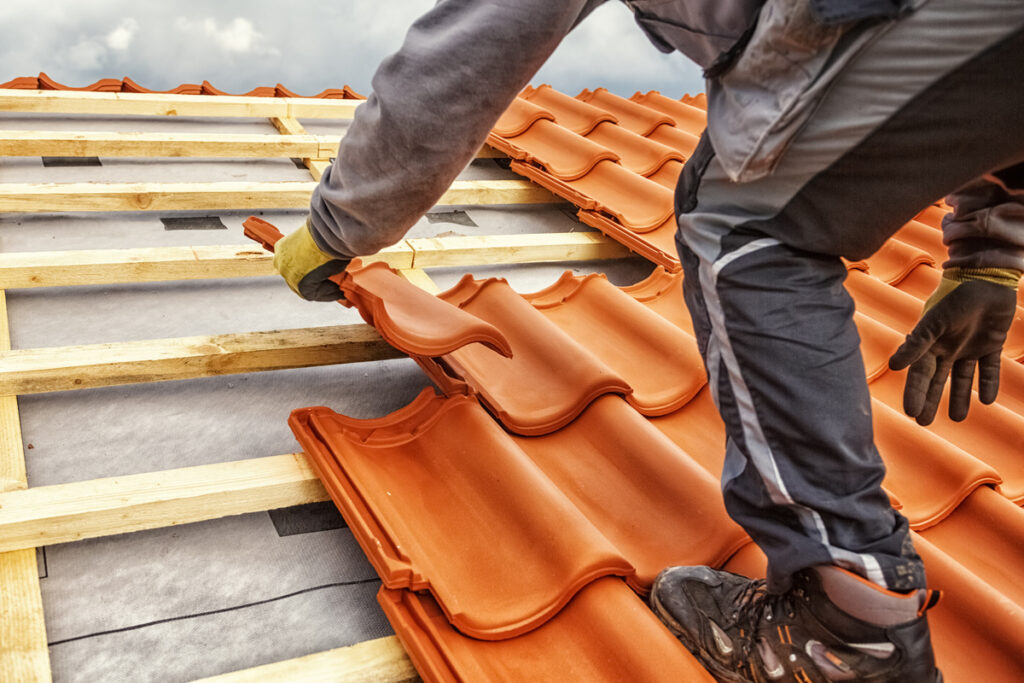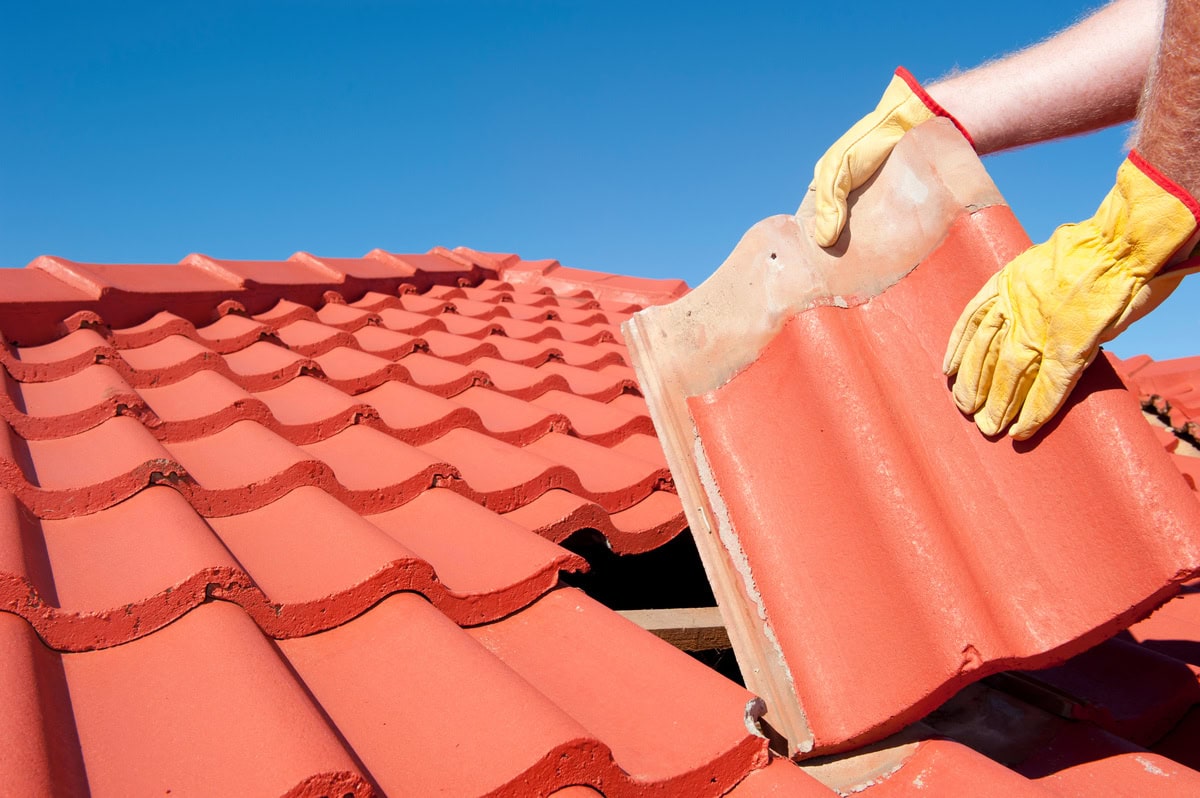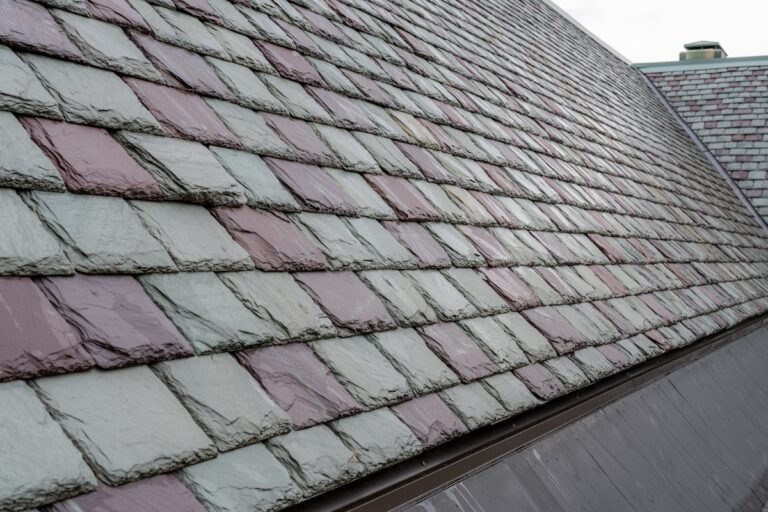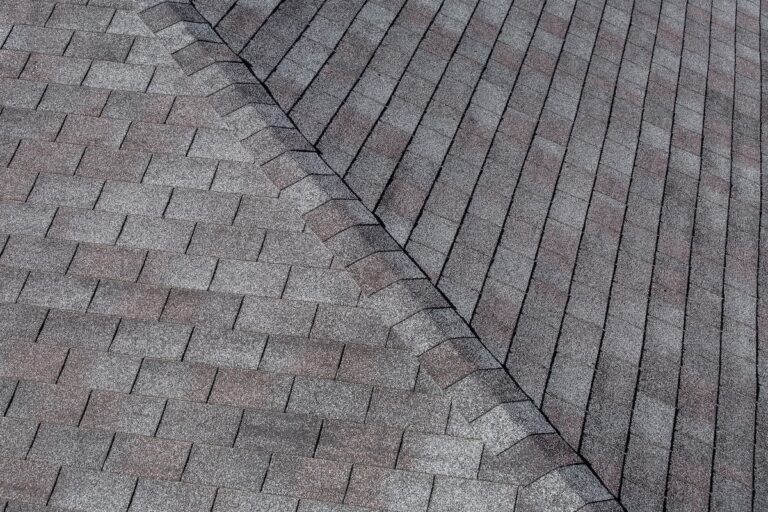A roof is more than just a shelter; it’s the guardian of your home, protecting it from the elements day in and day out. Among the various roofing options available, tile roofs stand out for their durability, aesthetic appeal, and longevity. However, like any other roofing material, tile roofs require regular maintenance and occasional repairs to keep them in top condition.
We’re here to help you understand everything you need to know about tile roof repair, from:
- Understanding what a tile roof is
- Identifying signs of damage
- Exploring repair options
What is a Tile Roof?

A tile roof is a roofing system composed of individual overlapping tiles, typically made from materials like clay, concrete, or slate. These tiles are designed to interlock, forming a protective barrier against rain, wind, and other environmental factors. Tile roofs have been used for centuries and are renowned for their durability and distinctive appearance.
Pros and Cons of Tile Roofing
Before diving into tile roof repair, it’s essential to understand the advantages and disadvantages of this roofing option:
✅ Pros:
- Durability: Tile roofs are known for their longevity, with some lasting over 100 years when properly maintained.
- Aesthetic Appeal: Tile roofs offer a timeless, elegant look that enhances the curb appeal of any home.
- Fire Resistance: Most tile materials are inherently fire-resistant, providing added safety to your property.
- Energy Efficiency: The thermal mass of tile helps regulate indoor temperatures, reducing the need for heating and cooling.
- Low Maintenance: With minimal upkeep, tile roofs can withstand harsh weather conditions without deteriorating.
❌ Cons:
- Weight: Tile roofs are heavier than other roofing materials, requiring a sturdy roof structure for support.
- Cost: While durable, tile roofs tend to have a higher upfront cost compared to asphalt shingles or metal roofing.
- Fragility: Individual tiles can crack or break under impact, necessitating timely repairs to prevent water infiltration.
- Installation Complexity: Proper installation of tile roofs requires skilled professionals familiar with the intricacies of the system.
- Limited Color Options: Unlike some roofing materials, the color choices for tile roofs may be more limited.
Different Styles of Tile Roofing
Tile roofing comes in various styles, each offering its own unique aesthetic and functional characteristics:
Clay Tile
Traditional clay tiles exude Old World charm and are prized for their natural colors and textures.
Concrete Tile
More affordable than clay, concrete tiles mimic the appearance of slate or wood and come in a range of colors.
Slate Tile
Known for its luxurious appearance and unparalleled durability, slate tile roofing adds sophistication to any home.
Interlocking Tile
These modern tile systems feature interlocking design elements for enhanced wind resistance and durability.
Mission or Spanish Tile
Characterized by their barrel shape and distinctive curves, Mission tiles evoke Mediterranean charm.
Signs of Tile Roof Damage
Identifying signs of tile roof damage early can prevent minor issues from escalating into costly repairs. Here are some common indicators of roof damage to watch out for:
- Cracked or Broken Tiles: Inspect your roof for any cracked, chipped, or missing tiles, as these can compromise the integrity of the roof.
- Leaks or Water Stains: Water infiltration manifested as leaks or stains on interior ceilings or walls may indicate roof damage.
- Sagging or Warped Roof Deck: A sagging or uneven roof deck could signal structural issues requiring immediate attention.
- Mold or Mildew Growth: Excessive moisture trapped under roof tiles can foster the growth of mold and mildew, posing health risks.
- Loose or Damaged Flashing: Damaged flashing around vents, chimneys, or skylights can allow water to seep into the roof assembly.
How to Repair a Tile Roof: 7 Steps for Success

Repairing a tile roof involves a systematic approach to address specific issues while ensuring the overall integrity of the roofing system. Here’s a step-by-step guide to common tile roof repairs:
1) Inspection:
Begin by conducting a thorough inspection of the roof to identify damaged or deteriorated tiles, as well as any underlying issues.
2) Tile Replacement:
Carefully remove and replace cracked, broken, or missing tiles, ensuring proper alignment and interlocking.
3) Sealant Application:
Apply roofing sealant or caulking to seal gaps between tiles, around flashing, and at roof penetrations to prevent water infiltration.
4) Flashing Repair:
Repair or replace damaged flashing to maintain watertight seals around chimneys, vents, and other roof penetrations.
5) Underlayment Inspection:
Check the condition of the roofing underlayment and replace any damaged sections to prevent moisture intrusion.
6) Structural Repairs:
Address any underlying structural issues, such as sagging roof decks or compromised support beams, to ensure the roof’s stability.
7) Professional Consultation:
For complex repairs or extensive damage, consult with a qualified roofing contractor to assess the situation and recommend appropriate solutions.
DIY vs. Professional Repairs
While some minor tile roof repairs can be tackled as DIY projects by homeowners with the necessary skills and equipment, certain tasks are best left to professionals. Here’s a comparison of DIY vs. professional repairs:
DIY Repairs:
- Pros: Cost-effective, convenient for minor repairs, opportunity for hands-on learning.
- Cons: Limited expertise, safety risks, potential for improper repairs leading to further damage.
Professional Repairs:
- Pros: Expertise and experience, access to specialized tools and materials, assurance of quality workmanship.
- Cons: Higher cost compared to DIY, scheduling constraints depending on contractor availability.
Ultimately, the decision to DIY or hire a professional for tile roof repairs should be based on the complexity of the task, your skill level, and the extent of the damage.
The Cost of Tile Roof Repair
The cost of tile roof repair can vary widely depending on factors such as the extent of damage, the type of tiles used, and the complexity of the repairs. Here’s a breakdown of potential expenses associated with tile roof repair:
- Material Costs: This includes the cost of replacement tiles, roofing sealant, flashing, underlayment, and any additional materials needed for repairs.
- Labor Costs: Professional roofing contractors typically charge for labor based on factors such as the scope of work, time required, and overhead expenses.
- Structural Repairs: If underlying structural issues are identified during the repair process, additional costs may be incurred for structural reinforcements or repairs.
- Accessibility: Accessibility challenges, such as roof pitch or height, can affect repair costs due to increased labor and safety requirements.
- Geographic Location: Regional variations in labor and material costs can impact the overall cost of tile roof repair.
To obtain an accurate estimate for tile roof repair, it’s advisable to request quotes from multiple roofing contractors and compare their proposals based on cost, reputation, and expertise.
How to Take Care of Your Roof Tiles
Preventive maintenance is key to prolonging the lifespan of your tile roof and minimizing the need for repairs. Here are some tips for maintaining and caring for your roof tiles:
Regular Inspections:
Conduct visual inspections of your roof at least twice a year, preferably in the spring and fall, to check for signs of damage or deterioration.
Clean Gutters and Downspouts:
Keep gutters and downspouts clear of debris to ensure proper drainage and prevent water backup that can damage roof tiles.
Trim Overhanging Branches:
Trim back tree limbs that overhang your roof to prevent debris buildup and minimize the risk of impact damage from falling branches.
Avoid Walking on Tiles:
Minimize foot traffic on your roof to prevent accidental damage to tiles and reduce the risk of slips and falls.
Professional Maintenance:
Schedule periodic maintenance inspections with a qualified roofing contractor to identify and address potential issues before they escalate.
Address Repairs Promptly:
Address any signs of roof damage promptly to prevent water infiltration and minimize the risk of structural damage or mold growth.
Repair Tile Roof Structure With Johnson Restoration!
Your tile roof is an investment in the long-term protection and aesthetic appeal of your home. If you’re looking for tile roof leak repair that you can count on, Johnson Restroation is the team to call! Contact us today to get your roof tile back in working order!






